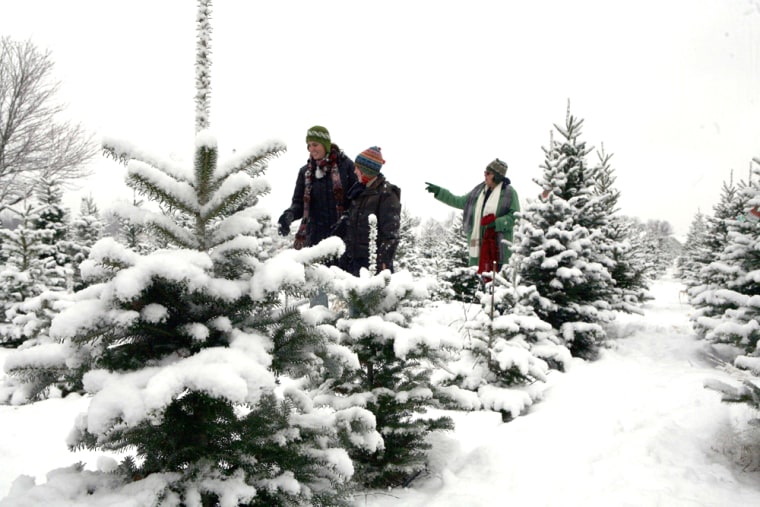When Dianne Murphy and her family were looking for a Christmas tree this holiday season, they didn’t head to a store. Instead, they followed a 14-year-old tradition. Dianne, her husband and three children drove out to the nearby Naughty Pine Nursery in Dickerson, Md., and armed with map and bow saw, traversed the nursery’s many acres in search of the perfect tree.
“We love the hunt of it, the camaraderie, the smell of the trees,” says Murphy. “Sawing is the whole fun part — dad holds the tree and the kids just go for it.”
There are 22,000 Christmas tree farms throughout the U.S., according to the United States Department of Agriculture (USDA), and roughly half of these are cut-your-own. (You can find a directory of them here.) And increasingly, farms are opening their fields to those bearing saws.
For those like the Murphys who enjoy the practice, it’s a return to a different era, before finding a Christmas tree meant taking a trip to the store or the street corner. Besides, the thrill of the hunt makes the end result — seeing a fresh, decorated tree in one’s home — that much more satisfying.
The concept of carting a six-foot tree into one’s house this time of year dates to the Egyptians, according to David Robson, educator of horticulture with the University of Illinois Extension. They brought in green date palms as a symbol of “life triumphant over death” on the winter solstice. Robson believes that the modern-day Christmas-tree tradition most likely came to the United States with Hessian troops during the American Revolution, or with German immigrants to Pennsylvania and Ohio.
The custom is now ubiquitous, of course. U.S. Christmas tree farms are currently growing roughly half a billion trees, and consumers snap up 30 million to 35 million of them each year.
But with all the talk of deforestation, just how “eco” is the practice? Very, it turns out. Usually, for one tree cut down, three seeds are planted. “We prefer to say ‘harvest,’ not cut down,” says Catherine Howard, who, with her father, runs the world’s leading magazine for Christmas tree growers, called (straightforwardly) Christmas Trees. “They’re a crop, grown for a specific purpose.”
Tree farms also provide support to local farmers and economy, and they’re 100 percent recyclable. More than 4,000 centers across the country lie in wait for January, when they turn the trees into mulch or sink them in lakes to prevent erosion.
In fact, plastic trees can be far more harmful. Government agencies have warned that some may contain lead, and the Washington Post has reported on unsafe working conditions in the Chinese factories that manufacture them. But that hasn’t slowed the artificial-tree business: The U.S. Department of Commerce says that America imported around 12 million fake trees from China in 2006, almost 600,000 more from the year before.
But ditch the fake stuff and head outdoors to spots like the family-run Linvilla Orchards in Media, Penn. Each holiday season, the farm piles hay into wagons and drives Christmas-tree cutters out into the pine-scented fields to choose the perfect size and type from over 1,000 trees. There are Douglas firs (which grow best in the Northeast region); Fraser Firs (which have a slightly blue hue to them); and balsams (the best-smelling tree).
“Every tree has its own fan,” says Rob Ferber, Linvilla’s senior manager of operations. (He likes them all.) After cutting down the tree with the provided bow saw, guests can roast marshmallows over a bonfire and sip hot apple cider.
For most farms, the tree-cutting season runs from the end of November to before Christmas; at Linvilla, Dec. 23 is the last day to find your own. But the farm knows just how important cutting your own tree can be: Last summer, they opened their gates to a just-discharged soldier and her family who wanted to celebrate Christmas in July.
